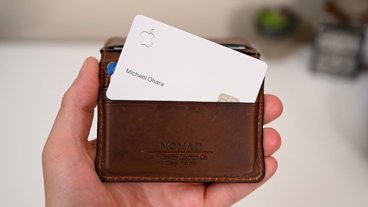Study points to network weakness as source of iPhone 3G woes
The results of an informal study of iPhone 3G users worldwide are in, and they suggest that problems with 3G networks — not the iPhone's hardware — are the source of a growing number of complaints about poor reception and download speeds.
After analyzing over 2,600 submissions (and more than a thousand others that were discarded because they were either blank or included an incomplete set of results), Wired concluded that the widely reported iPhone data speed problems "have more to do with carriers' networks than with Apple's handsets."
Overall, the user-submitted results show that 3G networks are performing faster than EDGE around the world — as would be expected. The best case scenarios reported 3G performance that was seven times that of EDGE, while other scenarios had 3G performing just as slowly as EDGE. In the worse case scenarios, users reported that they were unable to connect to 3G at all.
In particular, participants in Australia reported the slowest average 3G download speeds of about 759 Kbps, while users in Germany and the Netherlands reported the fastest average 3G download speeds of approximately 2,000 Kbps.
When breaking down regional results tied to a specific carrier, AT&T of the U.S. reportedly tied for third with Telstra, Telia and Softbank, with users of those networks reporting average download speeds of roughly 990 Kbps. European T-Mobile users reported the fastest average speeds of 1,822 Kbps, while Canadian carriers Rogers and its partner Fido ranked second with an average download speed of about 1,330 Kbps.
However, Wired said that US participants account for more than 75 percent of zero-data results, presumably because those users were dropped from AT&T's 3G network during their speed tests. Among the U.S. areas that fared the worst were some major metropolitan areas, such as San Francisco, where 10 out of 30 participants reported 3G speeds that barely match that of EDGE.
"This pattern is linear with femtocell developer Dave Nowicki's explanation that in major metropolitan cities where the most iPhone users reside, 3G towers are getting overloaded, resulting in slowdowns or delivering EDGE-like performance as a result," the report noted.
The fact that European networks appear to be outperforming those in the United States is likely a result their maturity, the report added. While AT&T began rolling out its 3G network in the U.S. in 2004, some of Europe's 3G networks have been undergoing refinements since 2001.
Separately, a Swedish firm specializing in wireless test chambers measured the iPhone's reception and found its sensitivity to be completely normal, ruling out a large scale flaw in the device's hardware design. Combining this finding with those from its iPhone user study, Wired concludes that "it's highly unlikely that Apple is going to wave a magic wand and say, '3G problems, be gone,' with a software update."
Instead, it's believed that changes will need to be made on the part of 3G providers to optimize their networks "in terms of number of towers, how they're positioned and how much bandwidth each tower can handle."
Still, Apple has been proactive in making strides to improve the way iPhones manage a 3G signal with the recent release of iPhone Software 2.0.2.
 Slash Lane
Slash Lane










 Marko Zivkovic
Marko Zivkovic
 David Schloss
David Schloss

 Malcolm Owen
Malcolm Owen

 William Gallagher
William Gallagher
 Mike Wuerthele
Mike Wuerthele
 Christine McKee
Christine McKee






